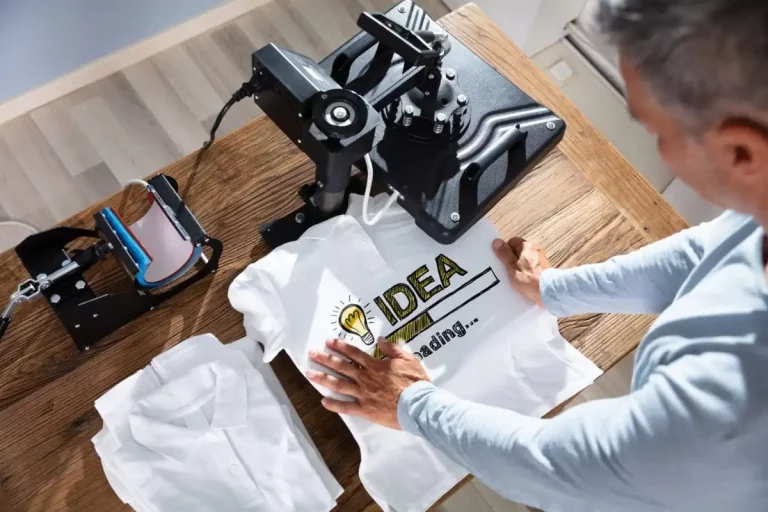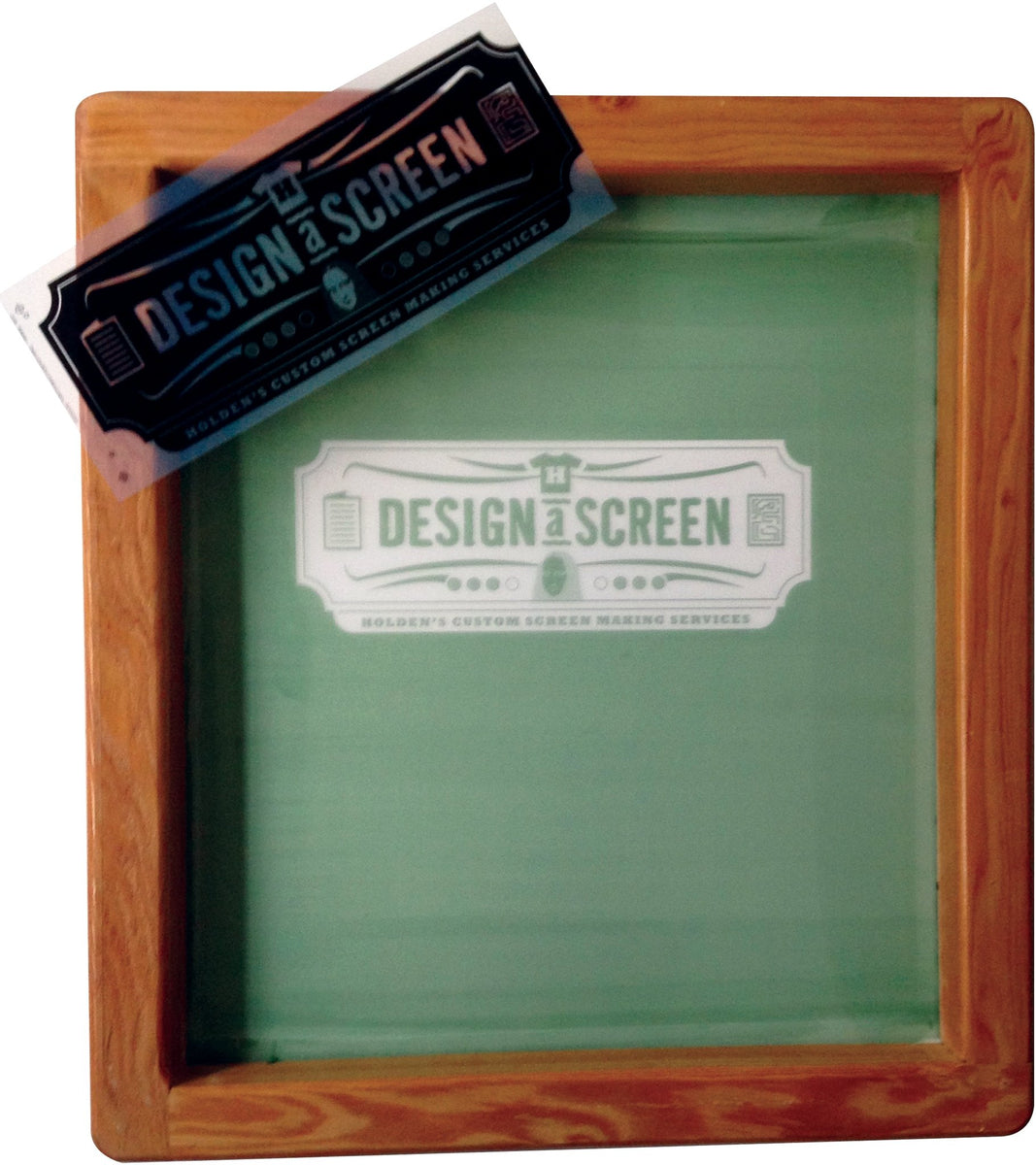Vintage Style Silk Screen Printing for Retro Fashion
Vintage Style Silk Screen Printing for Retro Fashion
Blog Article
Screen Printing Uncovered: Whatever You Required to Find Out About Tee Shirt and Garment Printing Techniques
If you've ever wondered just how those lively layouts wind up on your favorite tees, you're in the appropriate place. Display printing is an interesting method that integrates art with strategy, using limitless possibilities for creativity. Recognizing the basics, from equipment to ink options, can greatly impact your results. Prepared to check out the vital aspects that make display printing an art kind? Let's discover the details that can raise your tasks.
The Basics of Display Printing: Exactly How It Works
When you dive into display printing, you'll uncover it's both a science and an art. At its core, display printing involves developing a pattern, or display, that permits ink to go through just in certain areas (screen printing kit). You start by choosing your style and preparing your display with a light-sensitive solution. As soon as you expose this emulsion to light, it sets, leaving your layout as a negative room.
Next, you'll blend your inks and prepare your printing surface area. Placement the screen over the textile, after that use a squeegee to press ink through the screen onto the garment. This procedure needs precision, as you desire clear, lively prints. After printing, you'll cure the ink with heat, guaranteeing it follows the textile and lasts through washes. Each step is necessary, and grasping them will certainly elevate your screen printing abilities, transforming straightforward garments right into unique, expressive items.
Sorts Of Display Printing Strategies
When you comprehend the essentials of screen printing, it's time to discover the numerous strategies that can boost your layouts. One preferred technique is typical display printing, where ink is pushed with a stenciled screen. This strategy is wonderful for vibrant, dynamic colors. There's water-based ink printing, which offers a softer feel and is eco-friendly, yet it calls for a different method to treating.
Another alternative is plastisol printing, recognized for its durability and vivid colors, making it a favorite for many brands. Experiment with halftone printing to develop gradient results and detailed styles.
Important Tools for Display Printing
To accomplish stunning outcomes in display printing, having the best equipment is basic. You'll require a sturdy display printing frame, which holds the mesh that transfers your layout onto the garment. Next, buy high-quality mops; these are vital for applying ink equally throughout the display. You'll additionally call for a good direct exposure unit to produce your screens, as well as a washout cubicle for cleansing them after use. A dependable warm resource, like a conveyor dryer or warm press, is important for treating your prints to guarantee durability. Don't fail to remember an appropriate work area, outfitted with tables and storage for your supplies. Protective gear, such as gloves and masks, will certainly maintain you safe from chemicals and inks. With the right tools, you'll be well on your method to creating professional-quality prints.
Picking the Right Inks and Materials
When picking inks and materials for display printing, you require to take into consideration the kind of ink that functions finest for your project. Consider material compatibility to guarantee your designs look wonderful and last lengthy. Discover eco-friendly ink alternatives to make your printing process extra lasting.
Sorts Of Screen Inks
Selecting the best screen ink is necessary for accomplishing lively, resilient prints that meet your job's needs. There are several types of screen inks to analyze. Specialized inks, such as metal or glow-in-the-dark, can include special results to your layouts.

Material Compatibility Factors To Consider
Understanding fabric compatibility is important for achieving top notch screen prints, especially since different materials respond uniquely to numerous inks. Constantly evaluate your inks on example material to guarantee they adhere effectively and maintain shade honesty. In addition, keep in mind that fabric weight and texture can affect the final end result, so picking the appropriate ink and material combo is important for your job's success.
Eco-Friendly Ink Options
Green inks are coming to be a prominent option for screen printers that desire to minimize their ecological effect while preserving top quality. When choosing inks, consider water-based inks, which are less harmful and simpler to tidy up compared to typical solvents. These inks bond well with textiles, supplying dynamic results without harmful chemicals. You may also discover eco-solvent inks that utilize less volatile organic substances (VOCs), making them a safer option for both your health and the earth.
Furthermore, try to find inks made from sustainable resources, such as soy or vegetable-based options. By selecting the best inks and materials, you'll not only produce sensational styles however likewise add to an extra lasting printing procedure. Make the button, and your prints will reflect your dedication to the setting!
Preparing Your Layout for Display Printing

File Style Demands
To assure your style looks sharp and dynamic on textile, you'll require to pay close focus to file format demands for display printing. Make sure your layout has a transparent history to avoid undesirable white edges on your prints. Keep shade modes in mind; CMYK is standard for display printing, so transform your RGB creates accordingly.
Shade Splitting Up Strategies
Color separation is a necessary action in preparing your layout for display printing, and understanding it can greatly enhance your print quality. You'll need to damage your layout right into private shades, as each color requires a separate screen during printing. This accuracy not just guarantees exact shade representation but also streamlines the printing procedure.
Resolution and Dimension
Attaining the finest lead to screen printing begins with assuring your style has the best resolution and size. Preferably, your art work ought to be at the very least 300 DPI (dots per inch) for sharp, clear prints. If you use reduced resolution, your end product could look pixelated and unprofessional.
When it involves dimension, think about the measurements of your print location. Layout your art work to match the last print size, preferably developing it in the real measurements you'll be printing. In this manner, you'll prevent any unanticipated scaling concerns.
Always examine your style in both vector and raster formats. Vector graphics can be scaled without shedding quality, making them optimal for display printing. Preparing properly will assure your style looks amazing on every garment!
Step-by-Step Screen Printing Refine
Display printing is a vibrant process that allows you to develop vibrant styles on numerous surfaces. To obtain begun, you'll need a display, emulsion, and your selected ink. Prepare your display by cleansing it thoroughly. Next, use the emulsion uniformly and allow it completely dry in a dark area. When completely dry, reveal your screen to light with your style positioned on it, which will set the emulsion where the light hits, creating a pattern - screen printing kit.
After rinsing the unexposed emulsion, your display is all set. Set it up on your printing surface area and align your garment under it. Pour ink onto the display and utilize a squeegee to press the ink via the stencil onto the textile. Lift the display carefully and let the print dry. Lastly, treat the ink utilizing warmth to assure longevity. That's it! You have actually effectively display printed your style.
Tips for Successful Display Printing Projects
While you're diving into your screen printing tasks, keep in mind that prep work is vital to success. Begin by gathering all your materials-- inks, mops, garments, and screens. A tidy office assists avoid unwanted mistakes, so clean up before you start.
Next, verify your artwork is high-resolution and correctly sized for your garment. Test your screen for correct direct exposure and clean it thoroughly to stay clear of smudges. When blending your inks, adhere to the producer's guidelines to attain the ideal consistency.
During printing, use even stress with your squeegee for regular outcomes. Don't hurry; take your time to verify each print fulfills your requirements. After printing, allow your garments completely dry totally before handling or packaging them.
Last but not least, constantly keep an example of your benefit future recommendation. In this manner, you can evaluate your progression and improve your methods with time. Pleased printing!

Often Asked Concerns
How much time Does It Require To Establish a Screen Printing Work?
Establishing a screen printing job typically takes about half an hour to an hour. You'll prepare the screens, mix inks, and change the press. The time varies based upon complexity and experience, so remain organized!
Can I Publish on Different Textile Keys In Using the Same Method?
Yes, you can print on different fabric types using the same technique, but you'll require to adjust your inks and setups. Some materials take in ink in different ways, so exploring guarantees the ideal outcomes for each and t-shirt printing every product.
What Prevail Mistakes to Stay Clear Of in Screen Printing?
When screen printing, avoid common errors like making use of the wrong ink, disregarding correct direct exposure times, or missing pre-press checks. Always examine your setup and preserve tidy displays to assure top quality results each time.
Just How Can I Properly Tidy and Keep My Display Printing Devices?
To appropriately tidy and keep your display printing devices, you need to routinely wash displays with suitable solvents, check squeegees for wear, and assure all devices are kept completely dry and dust-free. Uniformity avoids expensive fixings and improves efficiency.
Is Display Printing Ecologically Pleasant Contrasted to Other Techniques?
Screen printing can be much more eco-friendly than various other techniques, especially if you use water-based inks and eco-conscious materials. By selecting lasting materials and methods, you decrease waste and decrease your influence on the planet.
Display Printing Uncovered: Whatever You Required to Know Concerning Tee Shirt and Garment Printing Techniques
At its core, display printing entails producing a stencil, or screen, that enables ink to pass through just in details locations. Setting the screen over the textile, after that make use of a squeegee to press ink with the screen onto the garment. One popular approach is traditional screen printing, where ink is pressed with a stenciled display.When picking inks and products for screen printing, you require to take right into account the type of ink that works ideal for your job.
Report this page